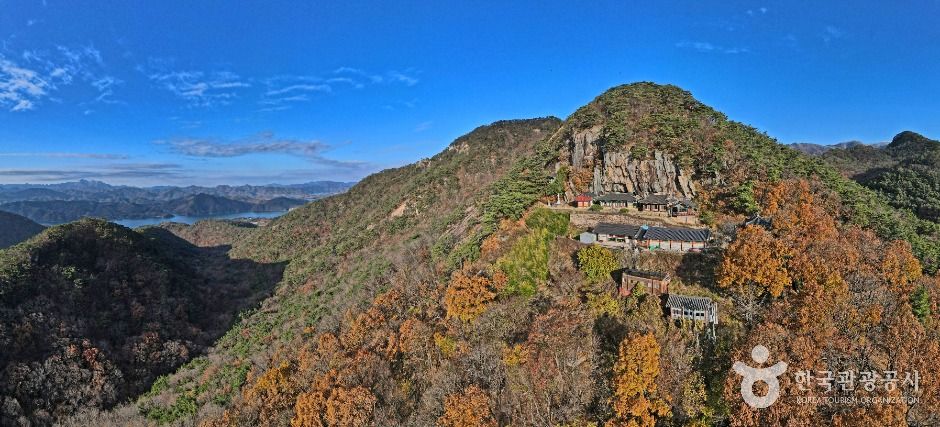Templo Jeongbangsa (정방사)
19.2Km 2025-08-20
Oksunbong-ro 12-gil 165, Susan-myeon, Jecheon-si, Chungcheongbuk-do.
El templo Jeongbangsa está situado al pie del monte Geumsusan. Fue construido por el monje Uisang en el año 662, en el segundo año del reinado de Munmu de Silla y actualmente funciona como una de las sedes del templo Beopjusa del monte Songnisan en calidad de sala de oración. En el libro geográfico Donggukyeojiseungnam, está presentado como Sanbangsa. Según la leyenda, el monje Uisang construyó el templo en el lugar donde se clavó su palo tirado en un intento de determinar el terreno indicado. El templo tiene un entorno natural muy bonito, sobre todo el paisaje del lago Cheongpungho. Una tercera parte del techo del templo está cubierta por roca, lo cual resulta muy llamativo.
Solar del Templo Cheongnyongsa (청룡사지)
19.5Km 2021-07-01
Cheongnyongsaji-gil 147, Sotae-myeon, Chungju-si, Chungcheongbuk-do.
+82-43-850-5980
Este es el lugar donde se erigía el templo Cheongnyongsa, uno de los mayores de la época Goryeo. La leyenda dice que un día de primavera, un monje se refugió de la lluvia bajo un árbol. Allí, vio a dos dragones jugando con un cintamani (una joya que cumple los deseos), que cayó a tierra. Uno de los dragones voló hacia el cintamani y en su ascenso pasó por el monte Cheonggyesan. El dragón y el cintamani desaparecieron y la lluvia paró.
Cerca del lugar se conservan los restos de la pagoda Jeonghyewonyungtap, que guarda la sarira del Preceptor Nacional Bogak Guksa, una linterna de piedra y la pagoda Jeonghyewonyungtap. Bajo la pagoda Jeonghyewonyungtap, hay un león grabado, por lo que es llamada Sajaseokdeung (linterna del león de piedra). Esta, junto con Ssangsajaseokdeung (linterna del león gemelo de piedra) del antiguo templo Hoeamsa de Yangju, en la provincia de Gyeonggi-do, son dos linternas representativas de la dinastía Joseon.


 Español
Español
 한국어
한국어 English
English 日本語
日本語 中文(简体)
中文(简体) Deutsch
Deutsch Français
Français Русский
Русский